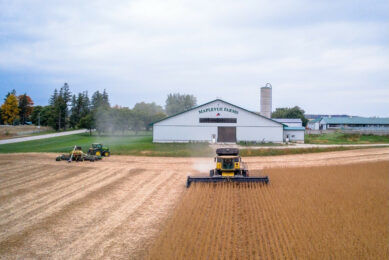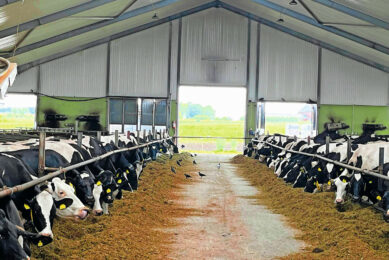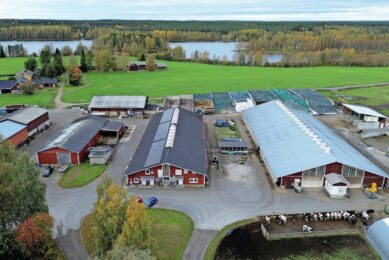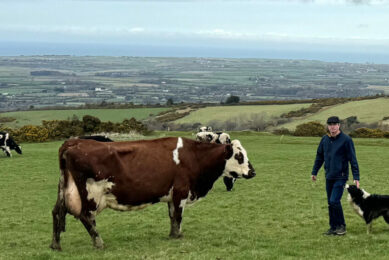Beef farmer converts to dairy with over £1m investment in Northern Ireland
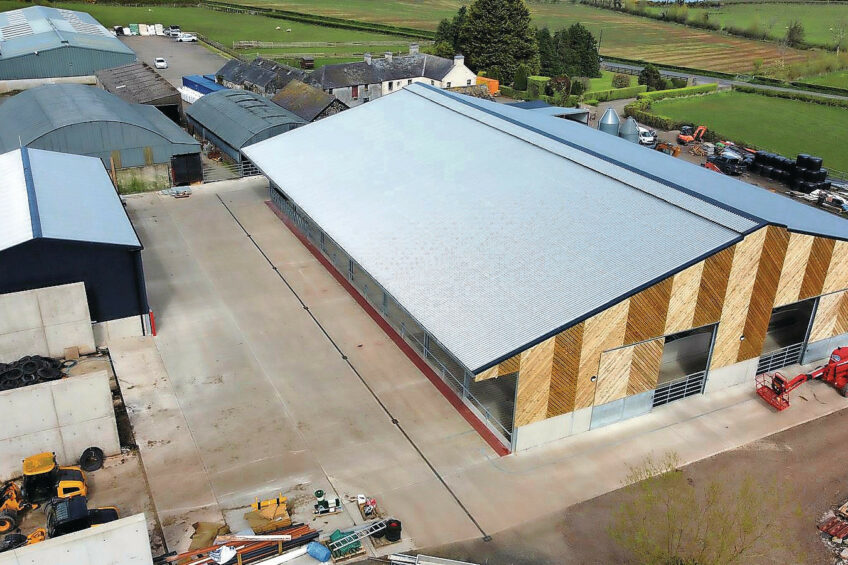
When converting beef housing to a brand new dairy unit, Robert Patton carried out a lot of research to find the technology and equipment suitable for his needs.
Robert, 56, has begun milking cows at his new dairy unit, Old Mill Dairies, at Ballycarry in Northern Ireland, which has been under construction for the past 2 years with an investment of over £1 million. When planning the new unit, Robert wanted to make it as comfortable as possible for the cows, and also build a unit that was easy to operate using minimal labour resources.
With that in mind he set about constructing a new high-tech dairy unit from the ground up, utilising the slurry tanks from the old beef housing.
Robotic milking
The cows are all Holstein and were purchased in one lot from a local dairy farmer who was exiting the industry. As the cows were used to parlour milking, the move created its own unique logistical challenges getting them used to robotic milking in the new barn.
“I grew up on the farm which traditionally kept beef, sheep and horses,” Robert says. “After leaving school, I came home and started our Old Mill Saddlery business on the farm, supplying everything horse owners need.
“Now I have a son doing his final school exams, who is also interested in farming. As it was becoming increasingly difficult to make money from suckler cow beef production, we took the decision to start the dairy unit.”

Dairy cow welfare
Old Mill Dairies extends to 190 acres (77ha), with a further 20 acres (8ha) taken as conacre (letting property). Currently, there are 90 cows milking, but that will reach 130 cows once more have calved. “The goal is to consistently milk around 110 cows with 20 dried off. The herd I purchased has been a totally closed herd with all breeding done internally, and no cattle bought in.”
The cows were not trained with robots, which, says Robert, is another reason he wanted a dairy unit that kept animal welfare to the fore, imposing no extra stress to the animals.
Robert’s new open-plan dairy unit measures 145ft long by 100ft wide (44m x 30m) and contains 126 cubicle spaces for cows. He choose the Cowcoon-Flex cubicles supplied by Wilson Agriculture, which also supplied the comfort mattresses.
Milking and feeding
Two Lely Astronaut A5 robotic units take care of milking the cows, which currently average 3.7 milkings each per day. Robert also added a Lely Vector robotic feeding system, with associated ingredients kitchen, a Lely Cosmix P out of parlour feeder, and a Lely Discovery barn cleaner.
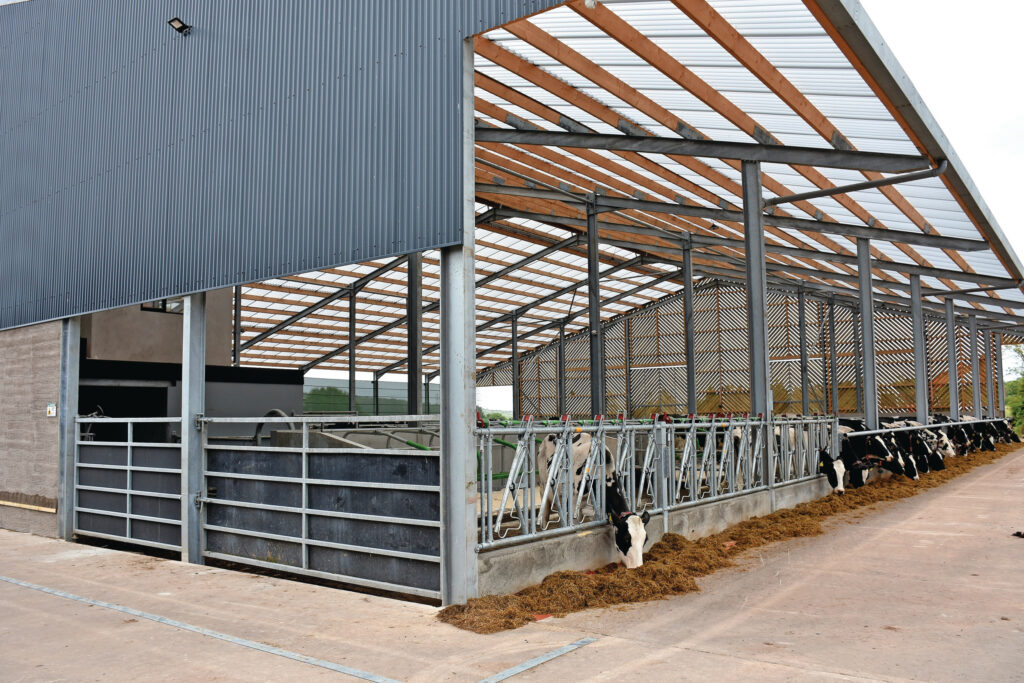
Two silos 130ft long by 35ft wide (39m x 10m) store the silage required to feed the cows that are kept indoors all year round. A slurry bubbler system to reduce gas build up in the tanks was also fitted as an extra safety precaution. All the main construction work was carried out by McKinty Construction from nearby Larne.
“I took my time over the past 3-4 years to research everything required to build the dairy,” Robert states. “Everything had to be right, even the slats are special grooved ones to give the cows better grip when walking. The feed locking gates are the French-made Jourdain brand supplied by Teemore Engineering at Derrylin.”
Extra light
One of the most important decisions I took was to add the Heatguard transparent roof sheeting supplied by Greenhill Systems near Ballymena. “I wanted to create a barn environment as close to nature as possible, therefore using the transparent roof sheeting to allow more light in was a no brainer,” Robert says.
Research has shown cows behave much better in terms of fertility and eating in a well-lit environment provided via the transparent sheeting. Heat stress is also reduced, which should also increase yields and animal welfare.
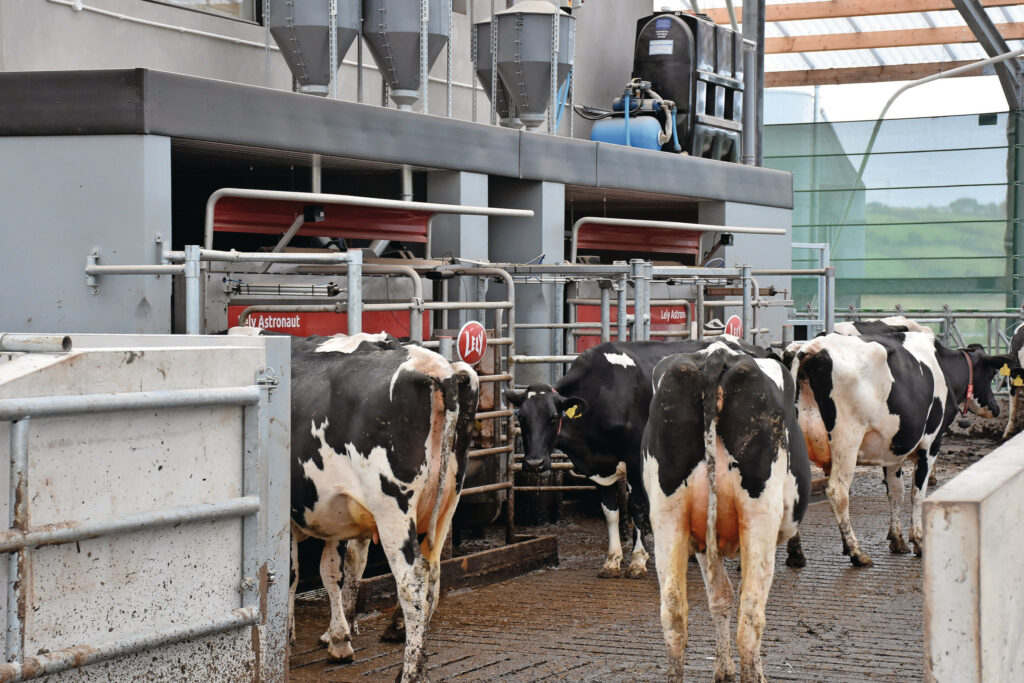
“The extra light in our shed has played a major role in how quick the cows have settled into their new home. Lely has been surprised how fast they have adapted to the robots, bearing in mind they came from a farm using a milking parlour. Some of those cows are 5 years old and really settled onto the robot milking units within 4 days. The changeover was very easy indeed.”
Robert sells his milk to Aurivo based in the Republic of Ireland. The cows are averaging 35kg of milk per day.
AI and breeding
He employs one member of staff to look after the dairy herd and is using AI bulls to breed more heifers. For now he will continue to use Holstein genetics but is keen on crossbreeding in the future.
Robert adds: “I went to Sweden and Denmark to look at cows and liked the ProCross crossbred approach taken by VikingGenetics. I’ve had the herd tested by veterinary consultants and they reported the cows are very clean in terms of diseases, etc. I’d like to keep the herd closed without bringing in any outside animals, therefore maintaining our excellent health status,” he added.



